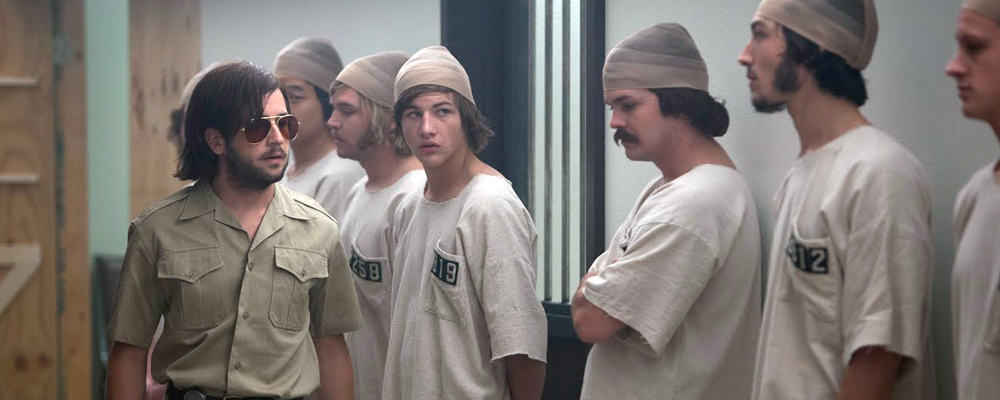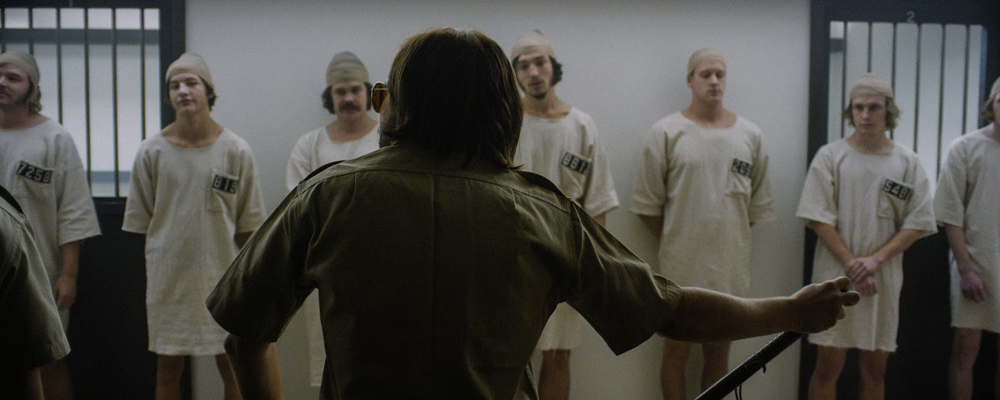‘The Stanford Prison Experiment’ Tells True Story of Famous Psychological Experiment
Sandra Miska
Psychology experiments are conducted at colleges and universities every day, but few have gained the notoriety of Dr. Philip Zimbardo’s 1971 prison experiment at Stanford University, the subject of the recently released film “The Stanford Experiment.” Anyone who has taken a college psych class is most likely familiar with the Stanford Prison Experiment, but for those who aren’t, SPE studied the psychological effects of becoming a prisoner or guard. Twenty-four male students were randomly assigned the roles of prisoner and guards, packed into a mock prison in the basement of a lecture hall, and made to act their roles under the watchful eyes of Zimbardo and his team, who intervened very little and watched the action from a video feed.
Unlike like previous films such as “The Experiment,” Kyle Patrick Alvarez’s “The Stanford Prison Experiment” wasn’t merely inspired by a true story, but a faithful reenactment of actual events, with few dramatic liberties taken. The film doesn’t cover the development of Zimbardo’s idea, but instead opens with shots of fliers seeking participants being posted on campus walls. Not surprisingly, a multitude of male students responded in hopes of earning some extra pocket change (15 big ones a day). Zimbardo (Billy Crudup) asks each one being interviewed whether they would prefer to be a guard or a prisoner, and surprisingly the majority chose the latter, perhaps because of the bad rep guards receive. Crudup randomly selects the guards, but plays a little mind trick when he tells them they were chosen because of their qualifications. Identities are soon stripped away when the prisoners are given identical outfits and known only by their prisoner numbers. The guards each become “Mr. Correctional Officer.”
Alvarez aimed to put together a cast that was a dream team of young actors, and most definitely succeeded. Former child actor Michael Angarano plays the film’s villain, a guard who takes on the persona of a sadistic guard inspired by a character in the prison classic “Cool Hand Luke,” complete with an accent. Instead of reigning him in, the other guards act as his flunkies, and the objects of their wrath including the rebellious Daniel (indie darling Ezra Miller) and Peter (Tye Sheridan, “Mud”), conservative Tom (Chris Sheffield, “Aquarius”), and soft Gavin (Kimmy Schmidt’s boyfriend Ki Hong Lee), who only wants his vitamins. Halfway through alternate Prisoner 416 (“Me and Earl and the Dying Girl” star Thomas Mann) is brought in and almost immediately recognizes an abusive situation that he attempts to rectify by peacefully resisting when he is ordered to eat gross sausages.
Rounding out the cast are Olivia Thirlby as Dr. Christina Maslach, Zimbardo’s protégé and girlfriend, and Nelsan Ellis as Jesse Fletcher, a veteran of San Quentin who is brought in to make the experiment more authentic. Both rightly take issue with Zimbardo’s methods. Fletch plays the role of parole board member and soon finds himself hating what being on the other side of the bars makes him.
Overall, this is an intense film that at times is hard to watch. Although it is a period film, it tackles issues that are relevant today more than ever, namely mass incarceration and police abuse. It’s fascinating to watch these seemingly normal young men, who were just hoping to score some easy money during summer break, transform into what they become in less than a week.
“The Stanford Prison Experiment” opens at the ArcLight Hollywood July 17. It will be available on VOD beginning July 24.


